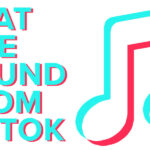New Zealand, a land of breathtaking landscapes and vibrant culture, has captivated hearts worldwide. For many, the allure lies in its stunning natural beauty, immortalized in countless photographs and films. However, beyond the picturesque scenery, there’s a deeper cultural resonance that truly defines New Zealand: the powerful and evocative Haka dance.
Image: New Zealand’s diverse landscapes offer a stunning backdrop to the rich cultural traditions of the Māori people, including the Haka.
Initially drawn to New Zealand by its famed landscapes, I soon discovered that the country’s essence extends far beyond its visual appeal. While the natural beauty is undeniably awe-inspiring – from the emerald hills surrounding Auckland to the wild beaches and ancient forests of the North Island – it was the profound cultural experience of encountering the Haka that left an indelible mark. Hiking Mt Tarawera and exploring Rotorua’s geothermal wonders were unforgettable, yet they paled in comparison to the raw emotional power and cultural depth embodied in the Haka.
My journey into the heart of Haka began with Contiki’s Travel Project, an initiative focused on exploring cultural roots. The project led me to delve into the origins and significance of Haka, the Māori dance form globally recognized, largely thanks to its association with the legendary All Blacks, New Zealand’s national rugby team. The internet is rife with viral Haka videos, like the emotionally charged performance that moved a bride to tears, demonstrating its universal appeal. There’s an undeniable magnetism to Haka – its raw passion, its intense presence, and its deep cultural roots resonate even with those unfamiliar with Māori traditions. Haka transcends mere performance; it’s a visceral experience.
It’s crucial to understand that Haka is not a monolithic entity. Instead, it encompasses a diverse range of forms, each unique and varying across different tribal regions. The All Blacks’ iconic ‘Ka Mate’ Haka is perhaps the most globally recognized, but it merely scratches the surface of this rich tradition.
Haka serves multifaceted purposes – it can be a welcome, a challenge, a storytelling medium, a tribute, or an expression of love. Yet, at its core, every Haka embodies three fundamental elements deeply ingrained in Māori culture: a profound connection to the land, a deep respect for ancestors, and a strong sense of community. These pillars are not just components of Haka; they are foundational to Māoridom itself.
Image: The volcanic landscapes of Mt Tarawera in New Zealand’s North Island, mirroring the powerful and dynamic movements of the Haka.
The Māori relationship with the land, or ‘whenua’, is unlike any other. It’s not about ownership but guardianship, a concept that profoundly shifted my perspective. Māori see themselves as ‘kaitiaki’, custodians entrusted with caring for the land, ensuring its health and vitality for future generations. This stewardship is rooted in respect for Ranginui (sky father) and Papatūānuku (earth mother), foundational figures in Māori cosmology.
This deep connection to ‘whenua’ permeates Haka, expressed not just through words but also through powerful movements. The rhythmic stamping of feet during Haka symbolizes Papatūānuku’s heartbeat, each stamp resonating with the earth’s life force. Performers draw strength and energy from the land, feeling its presence rather than merely observing it.
Image: Performers engaged in a powerful Haka routine, showcasing the intensity and synchronized movements characteristic of this Māori art form.
This profound respect for nature is mirrored in the Māori individuals I encountered. Their intimate knowledge of the land – understanding weather patterns, bird calls, and the medicinal properties of plants – is remarkable. Jamie Cook of the Ngāti Whātua-o-Ōrakei iwi, exemplified this deeply rooted connection. He guided me through a 48-hectare regeneration project at Bastion Point in Auckland. Over fifteen years, this initiative has seen the planting of 200,000 native and edible trees, revitalizing the land to its pre-1800s state and encouraging the return of native birdlife. The community’s commitment to sustainability is evident in their zero-pesticide approach, safeguarding the surrounding waterways and ocean.
Ancestry, or ‘whakapapa’, forms another crucial pillar of Haka. While my own ancestral tracing extends only a few generations, Māori can trace their lineage back to the original ‘waka’ (canoes) that brought their ancestors to New Zealand. The past is deeply interwoven with the present in Māori culture, and honoring ancestors is paramount. This reverence for lineage has preserved cherished Māori traditions, ensuring their continued relevance in modern life.
Storytelling, a cornerstone of Māori culture, has endured through generations. Before European settlement, Māori knowledge was orally transmitted through stories, songs, dances, and carvings. These traditions remain vital, serving as conduits for passing on cultural wisdom and narratives to younger generations.
Image: The towering Tane Mahuta tree in New Zealand, symbolizing the deep respect for nature and the interconnectedness of life, values reflected in Haka.
Haka itself functions as a powerful form of storytelling. Each performance pays homage to ancestors, and Māori children are immersed in Haka from a young age. The gravity and significance of Haka are not lost on these young performers; they deeply understand the words they chant and the heritage they represent.
Finally, ‘whanaungatanga’, or connection, binds all elements of Māori culture together. It’s not merely a component; it’s the essence of Māoridom. This connection encompasses the land, the past, and the community. It’s about tapping into the emotional, spiritual, and cultural significance of Māoridom, understanding the inherent meaning in everything.
Whether performed by the All Blacks, primary school children, or iwi leaders, Haka is never an isolated act. Performers are intensely focused, yet simultaneously connected to those around them, united by an invisible energy force called ‘ihi’. This ‘ihi’, a type of adrenaline generated during Haka, is palpable, almost tangible. It’s as if Haka transports performers to another realm, fueled by a potent blend of passion, honesty, and unity. Witnessing numerous Haka performances throughout my journey, I was consistently moved by its profound impact.
Image: A lone performer embodying the spirit of Haka amidst a New Zealand forest, showcasing the dance’s connection to nature and powerful individual expression within a cultural context.
The enduring relevance of Haka lies in the continued vitality of Māori culture. It’s not just relevant; it’s the cultural backbone and beating heart of New Zealand. I arrived in New Zealand seeking adventure, but I departed with a profound understanding of Haka and its enduring power. While historical battles may have ceased, Haka endures as a timeless testament to a culture that captivates every visitor to Aotearoa, the land of the long white cloud.


